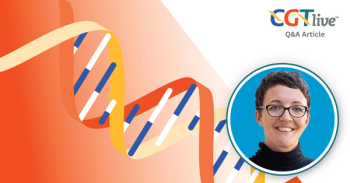
Researchers Use Stem Cells to Create Retinal Models, Study Eye Disease
Scientists at the Trinity College Dublin and University College London developed a new gene therapy approach that has the potential to treat a group of eye diseases known as retinitis pigmentosa (RP), according to research published in Stem Cell Reports.
Scientists at the Trinity College Dublin and University College London developed a new gene therapy approach that has the potential to treat a group of
RP is caused in part by mutations of the RP2 gene, however, the underlying mechanism of RP2-associated retinal degeneration in humans is unclear. According to the
However, authors explain “gene therapy for other inherited retinal diseases using adeno-associated viruses (AAVs) has been shown to efficiently transduce photoreceptors and retinal pigment epithelium (RPE) following subretinal injection in animal models.”
To produce 3D retinal organoids (ROs) as a model for human retinal disease, investigators developed both gene-edited isogenic RP2 knockout (RP2 KO) induced pluripotent stem cells (iPSCs) and RP2 patient-derived iPSC.
They then used a modified common virus to deliver a normal functioning copy of the RP2 gene into the engineered retina models, which contained a defective version of the gene.
Throughout the study, researchers measured “the temporal maturation of CRISPR gene-edited RP2 knockout ROs relative to their isogenic control, in addition to ROs derived from 2 unrelated individuals with the same R120X nonsense mutation.”
Results included:
- The RP2 KO and RP2 patient-derived organoids showed a peak in rod photoreceptor cell death at day 150 (D150) with subsequent thinning of the organoid outer nuclear layer (ONL) by D180 of culture
- AAV-mediated gene augmentation with human RP2 rescued the degeneration phenotype of the RP2 KO organoids, to prevent ONL thinning and restore rhodopsin expression
- Rod photoreceptor differentiation and survival is compromised in RP2 KO and R120X ROs
“AAV gene augmentation of RP2 can successfully reverse measurable and clinically relevant disease phenotypes,” authors explain. “These data show that 3D retinal organoids can be used to model photoreceptor degeneration and test potential therapies to prevent photoreceptor cell death.”
To develop optimal RP2 gene therapies, additional studies evaluating the requirement, or otherwise, for RP2 in the RPE ought to take place.
“In relative terms it is now fairly easy to replace troublesome genes with functioning versions using non-harmful viruses, which is what we have done here,”
Reference
Lane A, Jovanovic K, Shortall C, et al. Modeling and rescue of RP2 retinitis pigmentosa using iPSC-derived retinal organoids. Stem Cell Reports. Published online June 11, 2020. doi:10.1016/j.stemcr.2020.05.007
Newsletter
Stay at the forefront of cutting-edge science with CGT—your direct line to expert insights, breakthrough data, and real-time coverage of the latest advancements in cell and gene therapy.

























